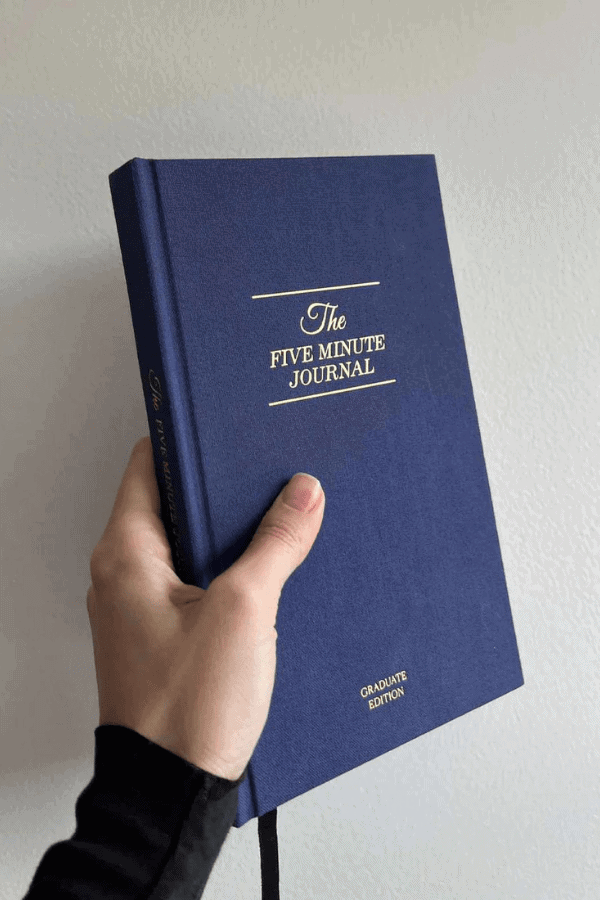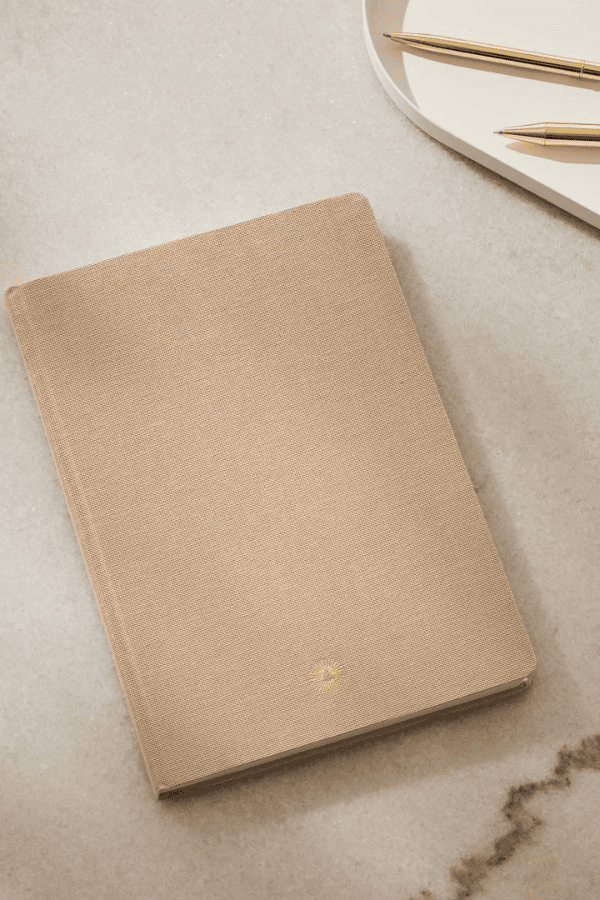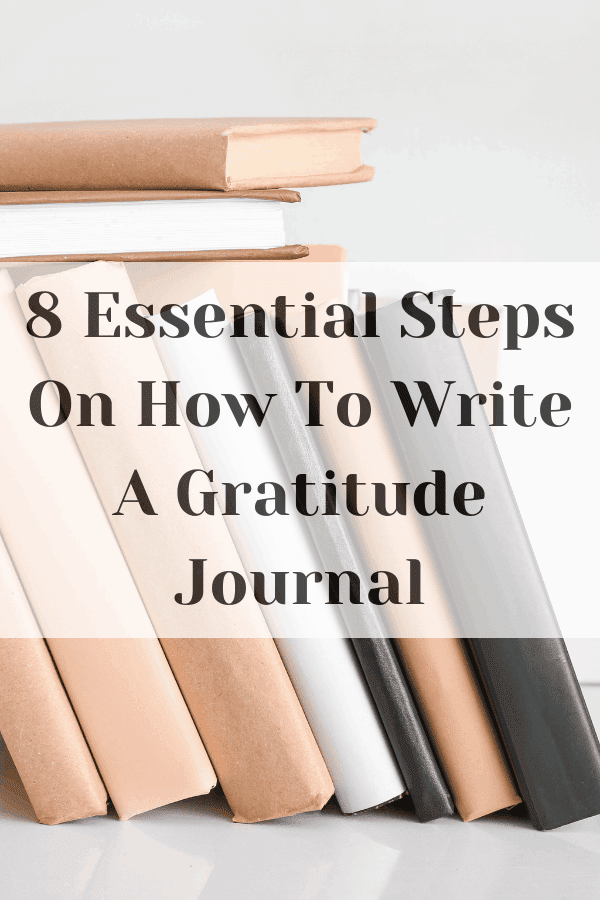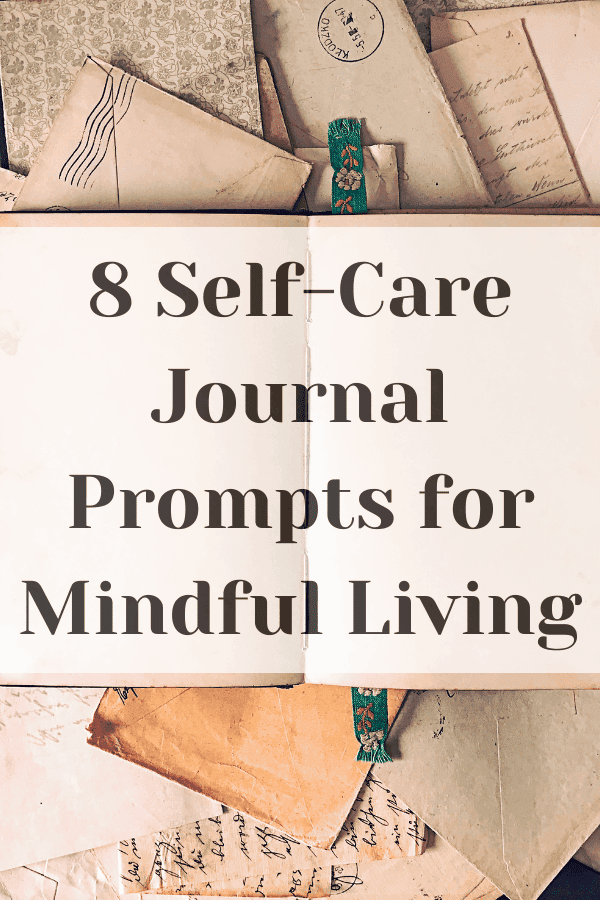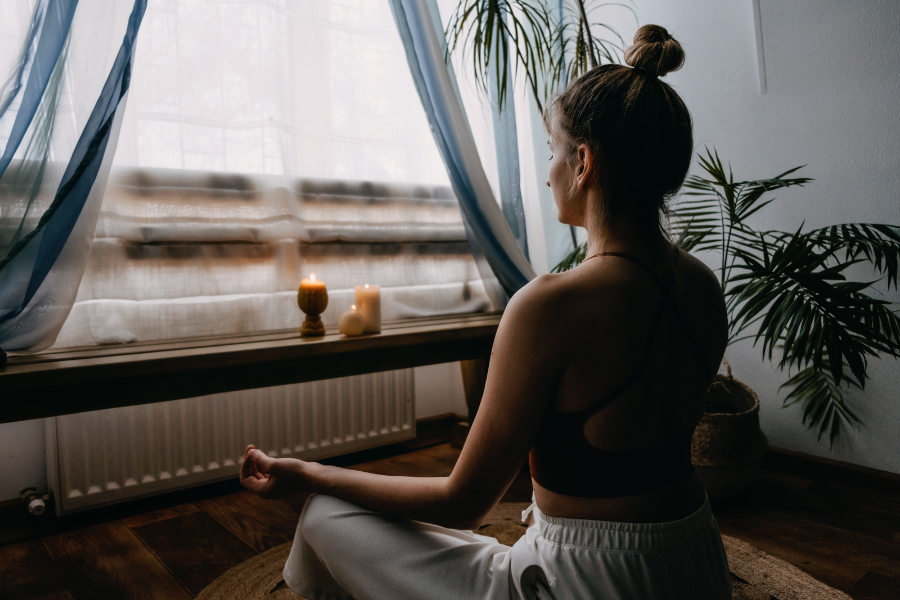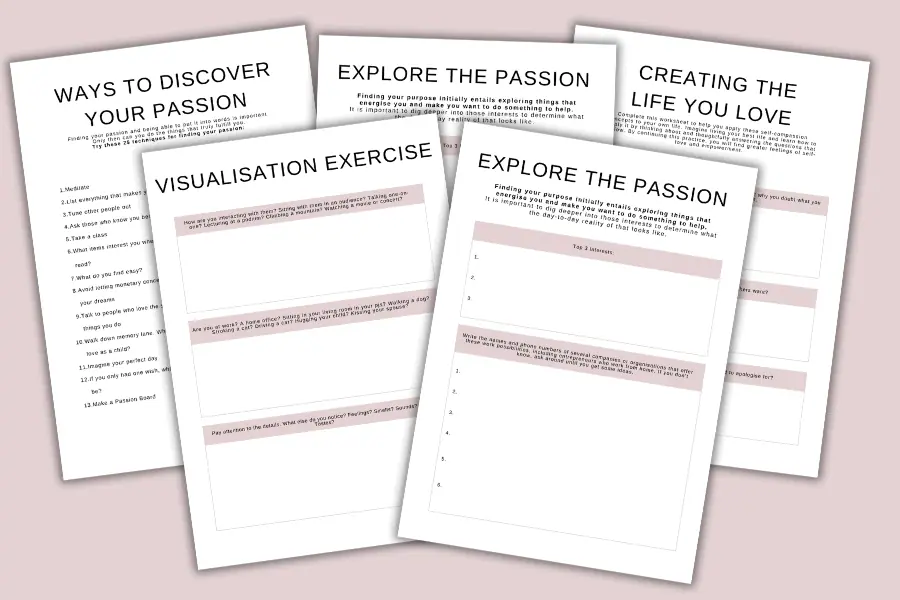3 Easy Journaling Techniques To Get You Started
This post may contain affiliate links, which means I’ll receive a commission if you purchase through my links, at no extra cost to you. Please read full disclosure for more information.

So, you’ve heard about journaling.
Maybe a friend raves about it, or you’ve seen countless Instagram posts of beautifully crafted journal pages.
It sounds great, right? A simple way to boost your mood, get organised, or even spark creativity.
But here’s the thing—starting a journal can feel a bit like staring at a blank page, literally and figuratively.
Why is it so hard to start? Let’s face it: not everyone knows what to write, how to write, or even where to begin.
Some people get overwhelmed by the idea that every entry needs to be deep, profound, or Instagram-worthy.
Others might worry about consistency—what if you don’t have something amazing to say every day?
And then there’s the question of format: Should it be digital or paper? Lined or blank pages? Is there a “correct” way to do this?
The good news? There’s no “right” way to journal!
Journaling is like having a conversation with yourself—no rules, no pressure, just pure self-expression.
In fact, there are plenty of ways to get started, depending on what you need most right now.
Whether you’re looking for a quick mental pick-me-up, a creative outlet, or a way to keep your life organised, there’s a journaling style out there for you.
Still unsure where to begin? Don’t worry—I’ve got you covered!
In this post, I’ll walk you through three easy and effective journaling techniques.
Each one is designed to help you start small, find your groove, and, most importantly, enjoy the process. So grab a cup of coffee, get comfy, and let’s dive in!
This blog post is about journaling techniques

Gratitude Journaling
What Is Gratitude Journalling?
Gratitude journaling is a simple but powerful technique where you focus on the good things in your life by writing them down regularly.
Think of it as taking a few minutes to acknowledge the positive, no matter how big or small.
Whether it’s the warmth of the sun on your face, a friendly smile from a stranger, or the fact that you managed to get out of bed on time today—it’s all about shifting your focus to the things that make life a little brighter.
How To Do It
Getting started with gratitude journaling is as easy as grabbing a pen and paper (or even using your phone). Here’s a quick guide:
Step 1: Start Small
Each morning or before bed, write down 3-5 things you’re grateful for.
It doesn’t have to be profound—sometimes, the simplest things are the most meaningful.
Step 2: Choose Your Medium
Pick a notebook that brings you joy, or use a dedicated gratitude journaling app.
The key is consistency, so choose what works best for you.
Step 3: Keep It Short and Sweet
Your entries can be a few sentences or bullet points.
No need to write a novel; just capture the essence of what makes you feel thankful.
Benefits
Why bother with gratitude journaling? Here are just a few reasons:
Boosts Mood and Overall Happiness
Reflecting on the good in your life can create a quick mental pick-me-up.
Over time, it rewires your brain to notice more of the positive.
Shifts Focus Away from Negativity
It’s easy to get bogged down by worries or frustrations.
A gratitude journal acts like a reset button, gently nudging you to remember what’s going right.
Cultivates a Positive Mindset
The more you practice gratitude, the more naturally it comes.
Soon, you’ll find yourself appreciating the little moments in real time, not just on the page.
Pro Tip
Make your gratitude entries specific to add depth and impact.
Instead of writing, “I’m grateful for my family,” try something more detailed, like, “I’m grateful for the way my sister makes me laugh during stressful times.”
Or, instead of a vague “I’m thankful for coffee,” go with “I’m grateful for the smell of fresh coffee that wakes me up and makes me feel ready to conquer the day.”
Specific details make your gratitude feel more real and meaningful, creating a deeper emotional connection.
Bullet Journaling
What Is Bullet Journalling?
Bullet journaling is like the Swiss Army knife of journaling techniques—it’s versatile, practical, and can be whatever you need it to be.
Essentially, it’s a customisable organisation system that combines your to-do lists, calendar, goals, habit trackers, and daily reflections all in one place.
Unlike traditional planners that come pre-printed with set formats, bullet journaling allows you to design each page to suit your specific needs and preferences.
Whether you’re looking to boost productivity, track personal growth, or simply have a creative outlet, bullet journaling offers a flexible approach to keeping your life organised.
How To Do It
Getting started with bullet journaling might feel intimidating with all those gorgeous spreads you’ve seen online, but the beauty of this technique is that it’s entirely up to you how elaborate or minimal you want it to be.
Here’s a simple guide to begin:
Step 1: Gather Your Tools
All you need is a dotted notebook (though any blank notebook works) and a pen.
The dots help guide your writing, drawing, and dividing the page without being too intrusive.
Step 2: Create Sections
The basic bullet journal uses a few core sections, or “collections”:
- The Index: Acts like a table of contents, so you can easily find different sections.
- The Future Log: A place to jot down events, goals, or plans for upcoming months.
- The Monthly Log: A calendar and task list for the month.
- The Daily Log: A space for daily tasks, events, notes, and reflections.
- Custom Collections: Anything else you want to track, like habit trackers, mood logs, meal planning, or books to read.
Step 3: Keep It Simple or Get Creative
You can stick to basic layouts with minimalist designs or go all out with doodles, washi tape, stickers, and colourful markers.
It’s your journal—make it fun and personal!
Step 4: Start Small
To avoid feeling overwhelmed, start with just one or two sections.
As you get comfortable, you can add more pages and layouts that serve your needs.
Benefits
Bullet journaling has numerous benefits that go beyond just keeping a schedule:
Helps Keep Life Organised
With everything in one place—your tasks, events, goals, and notes—you won’t need to juggle multiple apps, planners, or sticky notes.
It streamlines your planning process.
Provides a Creative Outlet
Whether you’re a doodler or prefer clean lines, bullet journaling offers a chance to get creative.
The act of designing your pages can be both relaxing and fulfilling.
Encourages Mindfulness and Reflection
As you track habits, jot down reflections, or make lists of things to do, you become more aware of your routines and behaviours.
This awareness can lead to positive changes over time.
Pro Tip
If you’re feeling overwhelmed by all the possibilities, start simple!
Focus on just one section or habit at a time.
Maybe begin with a monthly log or a simple daily task list.
As you get more comfortable, you can experiment with different layouts, add habit trackers, or try more creative designs.
Remember, the goal isn’t perfection—it’s finding a system that works for you.
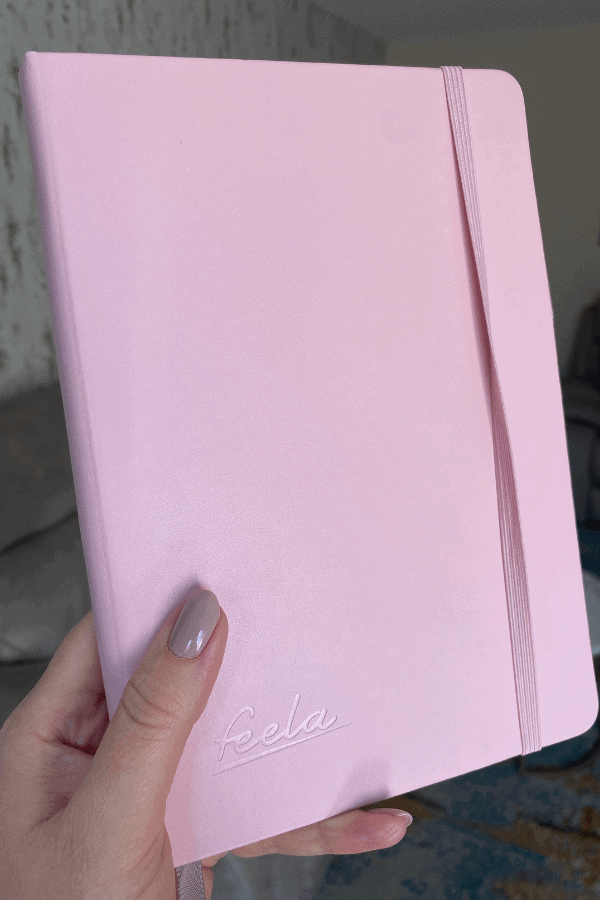
Morning Pages Journaling
What Is Morning Pages Journaling?
Morning Pages is a journaling technique introduced by Julia Cameron in her book The Artist’s Way.
Think of it as a mental decluttering exercise—a way to clear out the cobwebs and start your day with a fresh, open mind.
The idea is simple: you write three pages of whatever comes to mind first thing every morning.
It’s not about crafting beautiful prose or penning the next great novel.
Instead, it’s about letting your thoughts flow freely, capturing the raw, unfiltered content of your mind as soon as you wake up.
Whether it’s worries, random thoughts, dreams from the night before, or even a grumpy rant about the weather—it all goes on the page.
How To Do It
The beauty of Morning Pages is in its simplicity. Here’s how to get started:
Step 1: Set Aside Time Each Morning
Carve out 10-20 minutes every morning, ideally right after you wake up.
This is when your mind is most unguarded and ready to spill out whatever it’s been holding onto.
Step 2: Just Start Writing
Grab a pen and paper—Morning Pages are meant to be handwritten.
Writing by hand slows you down and helps you connect more deeply with your thoughts.
Begin writing whatever pops into your head, no matter how random, silly, or seemingly unimportant.
The goal is to fill three pages.
Step 3: Don’t Edit or Overthink
This is a no-judgment zone!
Don’t worry about grammar, spelling, or whether your writing makes sense.
No one will see these pages but you, so let your thoughts flow without stopping to edit or censor yourself.
Step 4: Keep It Consistent
Try to do it every day, even if you miss a morning now and then.
The consistency helps build a routine and maximises the benefits.
Benefits
Morning Pages can have a profound impact on your mental and emotional well-being:
Clears Mental Clutter
By writing down whatever is weighing on your mind, you create a sense of mental space and calm.
It’s like taking out the mental trash—those pesky thoughts no longer bounce around in your head all day.
Boosts Creativity and Problem-Solving
With your mind clear of clutter, creative ideas have room to emerge.
Many people find that Morning Pages help them think more creatively and solve problems more effectively throughout the day.
Provides a Safe Space for Self-Reflection
Morning Pages offer a private space to express thoughts and feelings you might not feel comfortable sharing elsewhere.
Over time, this practice can help you understand yourself better, uncover hidden desires, and identify patterns in your thinking or behaviour.
Pro Tip
Don’t worry if your writing feels scattered or nonsensical—that’s entirely the point!
The purpose of Morning Pages is not to produce polished writing but to capture your stream of consciousness.
Just keep your hand moving across the page, and resist the urge to stop or think too much.
Remember, no one will read it, not even you (unless you want to).
Trust the process, and see where your mind takes you!
Your Journaling Journey Awaits
So, there you have it—three simple and effective journaling techniques to kickstart your journey: Gratitude Journaling, Bullet Journaling, and Morning Pages.
Each one has its own unique style and benefits, and the best part? You don’t have to pick just one!
Try them all, mix and match, or even create your own hybrid method.
The key is to find what feels right for you.
Remember, there’s no “right” way to a journal.
Seriously!
You don’t need to write perfectly or even consistently.
You don’t have to create beautiful pages worthy of social media or fill notebooks with profound insights every day.
Journaling is a deeply personal practice, and its power lies in its flexibility.
It’s all about finding what brings you joy, peace, clarity, or whatever it is you’re looking for.
So, take a deep breath, grab a notebook (or any piece of paper lying around), and just start writing.
Don’t overthink it; don’t judge it.
Just let the words flow.
It might feel awkward or silly at first, but give it time.
You’ll find your rhythm, and who knows? You might even look forward to this little daily ritual of yours.
Share this post: on Twitter on Facebook
